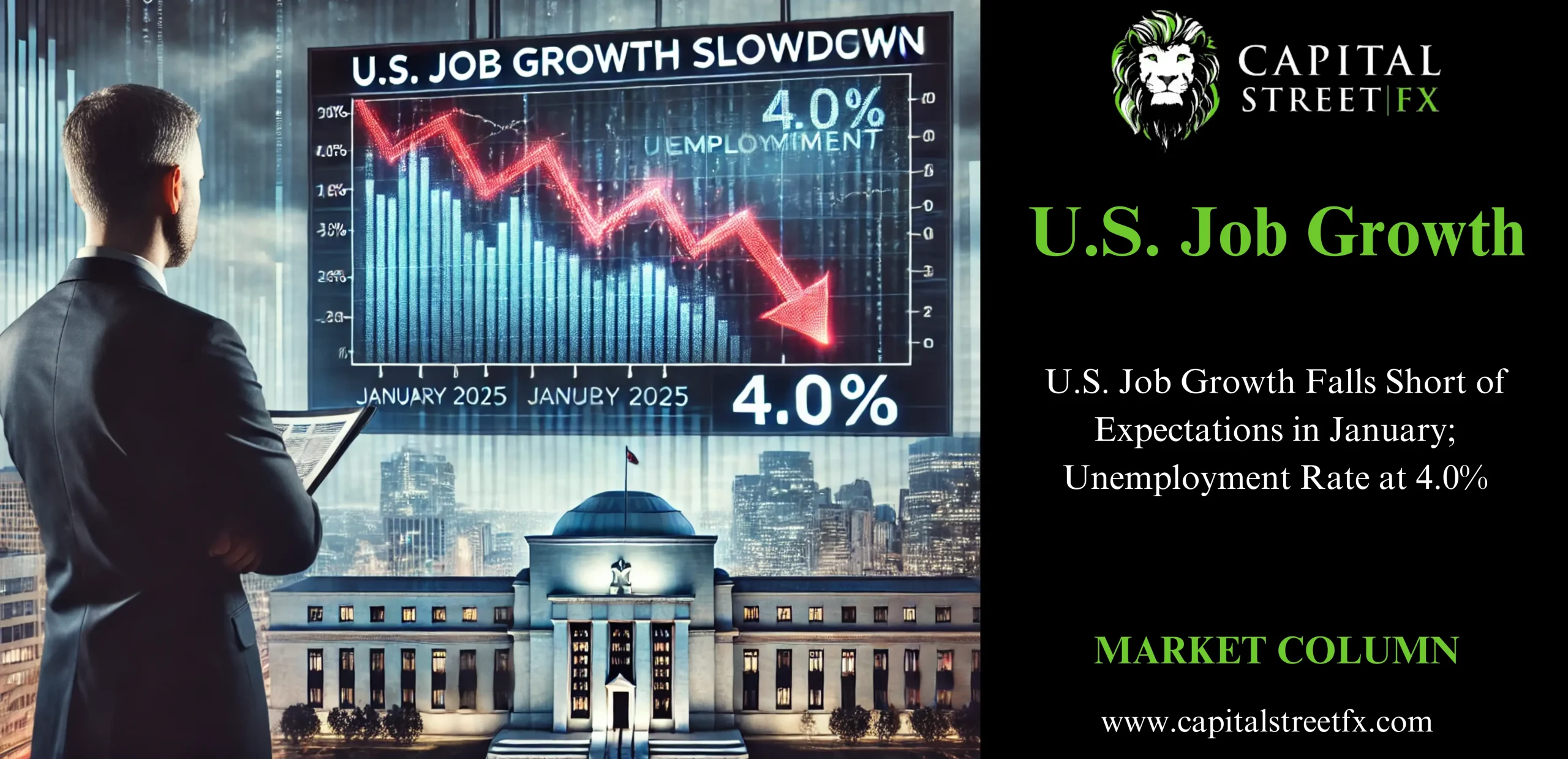Introduction
The U.S. job market stumbled in January, with employment numbers failing to meet economists’ expectations. The latest report from the Bureau of Labor Statistics (BLS) revealed that nonfarm payrolls grew by just 143,000, a significant drop from December’s 307,000 job gains. This decline raises concerns about economic stability, Federal Reserve policies, and potential challenges ahead.
Overview of January’s Employment Report
Economists had projected job gains of around 170,000, with estimates ranging between 60,000 and 250,000. The lower-than-expected numbers reflect several factors, including adjustments to seasonal employment data and external disruptions like severe weather conditions.
READ MORE – U.S. Private Sector Payrolls Exceed Expectations in January 2025
Factors Influencing Job Growth Slowdown
California Wildfires and Harsh Winter Conditions
Unusual weather events, including wildfires in California and winter storms across the Midwest and Northeast, disrupted businesses and slowed hiring. Many companies delayed hiring due to uncertainty surrounding recovery efforts.
Economic Policy Effects
The impact of fiscal policies, trade regulations, and global economic trends contributed to this slowdown. Companies have been cautious about expanding their workforce amid fluctuating economic conditions.
Unemployment Rate at 4.0%
The unemployment rate held steady at 4.0%, compared to 4.1% in December. However, due to new population controls applied only to January data, this figure cannot be directly compared with previous months. Despite the slowdown in hiring, the relatively stable unemployment rate suggests continued resilience in the labor market.
READ MORE – How to Trade Bitcoin Like a Pro in 2025 | Expert Tips & Strategies
Wage Growth and Economic Implications
Wages continued to rise, with average hourly earnings increasing by 0.5% in January, up from a 0.3% increase in December. Year-over-year wage growth remained at 4.1%. This wage stability may influence inflation and consumer spending patterns.
Federal Reserve’s Interest Rate Policy
The Federal Reserve will likely delay interest rate cuts until at least June, given the steady unemployment rate and wage growth. After implementing multiple adjustments in the past two years, the Fed has maintained its benchmark interest rate within the 4.25%-4.50% range.
Sectors Most Affected
- Job Losses: Retail, hospitality, and construction saw significant declines due to weather-related disruptions.
- Growth Sectors: Healthcare, professional services, and technology sectors continued to see steady job gains.
Market Reactions to Job Report
The stock market showed mixed reactions following the release of the employment report. Investors remain cautious, watching the Federal Reserve’s response to the data before making major moves.
Economic Forecasts for 2024
Economists predict moderate job growth for the remainder of the year, with employment stabilizing in the second quarter. Federal Reserve actions will play a crucial role in shaping economic trends.
READ MORE – 5 Technical Indicators Every Trader Should Know | Capital Street FX
The Role of Trump’s Policies in the Job Market
Trump’s fiscal, trade, and immigration policies continue to influence employment trends. Businesses are still adjusting to shifts in regulatory frameworks and economic policies.
Conclusion
While January’s job growth fell short of expectations, the overall labor market remains relatively strong. The 4.0% unemployment rate suggests stability, though external factors such as Federal Reserve policies and economic uncertainties will shape the coming months.
FAQs
- What caused the job growth slowdown in January 2024?
- Factors like severe weather, seasonal adjustments, and economic policies contributed to the decline.
- How does the 4.0% unemployment rate impact the economy?
- It indicates stability but also raises concerns about economic slowdown and hiring trends.
- Will the Federal Reserve cut interest rates soon?
- The Fed is likely to hold off on rate cuts until at least June, pending further economic analysis.
- Which industries were most affected by the slowdown?
- Retail, hospitality, and construction faced the biggest losses, while healthcare and technology saw gains.
- How will this affect job seekers in the coming months?
- The market may remain competitive, with job seekers needing to adapt to shifting industry demands.

